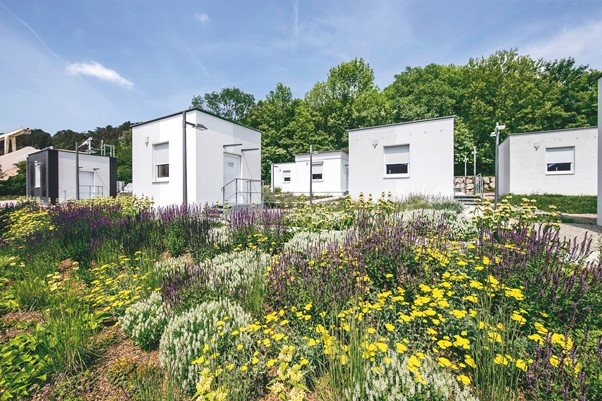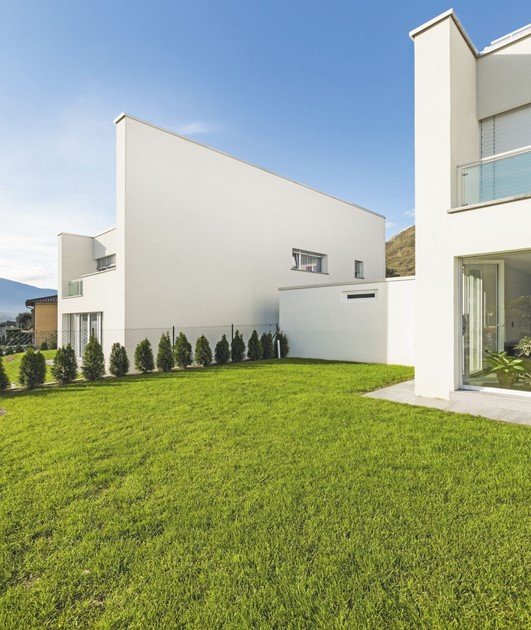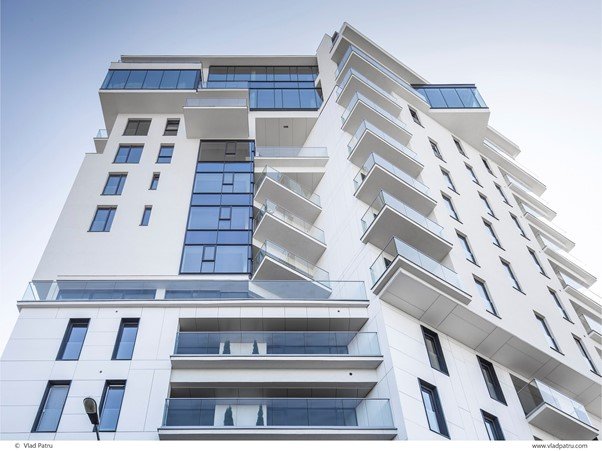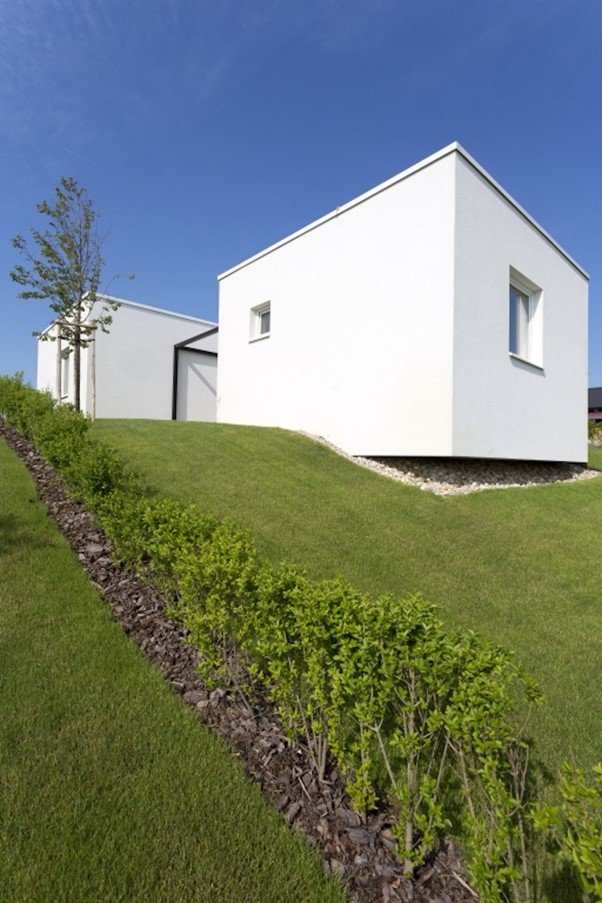Knowing where to start when constructing an energy-efficient building can be overwhelming. Whether you’re looking to make improvements to your own home, or you’re setting out to construct an energy-efficient building from the ground up, we’ve put together a list of 6 top tips to help you get started. Read on for some inspiration. 
1. Insulate. Insulate. Insulate.
When conducting our research at the Viva Research Park, we found that an uninsulated brick building requires 2.5x as much energy as an insulated one. What’s more, according to our findings, you can save 40% on energy costs by simply insulating your building.
Insulation helps to keep a building cool in the summer and warm in the winter, so the central heating won’t have to work as hard. Our External Wall Insulation systems, or EWIs, are perfect for homes and non-residential buildings, saving both ground space and money spent on energy bills.
Download our free guide to EWI here to find out more about which wall insulation system is best for your build. Or explore more reasons why you should insulate your building on our blog.

2. Thick Walls
Wall thickness and choice of building material go hand in hand with insulation for increased energy efficiency. While it may seem obvious, thick walls serve as energy regulators, gradually releasing the accumulated heat from the day throughout the cooler evening hours.
In terms of climate control, concrete and brick are the best candidates, with houses built from 25cm bricks maintaining room temperatures most effectively at 15-17 degrees according to our findings. If your project budget allows for it, investing in thicker walls is a surefire way to reduce heat loss and conserve energy in your building.

3. Control Interior Climate
Our range of Healthy Living products helps to control and optimise interior climates for enhanced air quality and energy efficiency. While external features might be the most obvious starting point, factors such as plaster can have a significant impact on the energy efficiency of a building.
Our Kilma Plaster, for example, helps to maintain the ideal interior humidity level between 40-60% and control room temperatures. 
4. Air Tightness
Ensuring all doorways, windows and external walls are airtight is fundamental to boosting a building’s energy efficiency.
Investing in double, or even triple, glazing for a building’s windows drastically reduces the amount of inside heat lost to the atmosphere, lessening the need to rely on less environmentally friendly sources like central heating. Other benefits of glazed windows include noise dampening, condensation control and fewer draughts.
Getting technical, resources such as Low-E glass help reflect outgoing heat into the building, while ‘warm edge’ pane spacers contain less metal for increased efficiency.
5. Use the Sun
Depending on the scale of the project, solar panels can be an excellent addition to an energy-efficient building. As an innovative means of generating your own energy from nature’s resources, solar panels work year-round to contribute to your energy intake. While they can be an expensive initial investment, solar energy technologies increase the social and market value of a building as eco-friendliness is an ever-increasingly desirable property for modern properties. 
6. Utilise Bioclimatic Architecture
The cheapest way to promote energy efficiency is to be smart about it.
When designing a building, incorporating energy efficiency into its very design is becoming a popular tenet of today’s architecture. Bioclimatic Architecture considers the local environmental conditions and climate when building a house and works with them to achieve a greater level of energy efficiency.
Perhaps adding a sloped roof for optimal sun exposure, or maximising south-facing windows is your best bet. Or, maybe, in warmer climates, constructing large, flat facades to dissipate heat in the shade would work best. Regardless of which design you choose, however, Baumit has a product to help. Check out our range of facade renders and paint for external surfaces for some inspiration.
If you’re looking to increase the energy efficiency of your building, get in touch with the team at Baumit today and we’ll point you in the right direction of some effective products and useful solutions.

